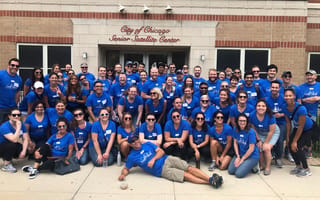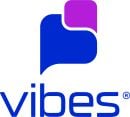
Each year, approximately 25 to 50 percent of a brand’s customers become inactive, according to a report by sales and marketing automation platform SharpSpring.
While customer loss is part of the process, according to Hubspot, the cost of acquiring new ones has increased by almost 50 percent in the last five years.
Statistics like these highlight just how crucial an effective re-engagement strategy is. Whether it’s through texts, emails or surveys, the goal is always the same: to rekindle that brand-to-consumer flame (and keep it burning).
To get a quick pulse of the re-engagement strategies their teams are implementing, Built In Chicago connected with Cami Bartel, content marketing manager at Vibes and Jack Seney, director of marketing at Arrive. They shared strategies they’ve had success with and what they learned throughout the process.
Software company Vibes enables marketers and e-commerce professionals to acquire, engage, service and transact with consumers through a variety of mobile channels. When designing re-engagement campaigns, Content Marketing Manager Cami Bartel said she relies heavily on personal and targeted incentives to really pique consumer interests.
What’s one re-engagement strategy your team has had a lot of success with?
SMS texting is by far the best opportunity for re-engagement. Email is fantastic for longer, rich visual content. Given how attached most of us are to our phones, SMS intimacy lends itself to quick attention capture and concise, timely messaging. The accessibility and open rates of SMS are impressive as well, with a 98 percent open rate within the first 90 seconds of delivery.
A Vibes customer recently utilized automated SMS messages to target consumers who needed an incentive to purchase again. Based on recent engagement, the customer sent out two subsegments of rewards: an offer for 25 percent off for disengaged consumers, and an offer for 10 percent off for consumers who recently purchased. The campaign averaged above 6 percent click-through rates over the course of a year and incrementally increased the brand’s revenue.
A targeted strategy will lead to higher engagement, increased likelihood of re-engagement and ultimately higher revenue over time.”
What’s a best practice you’ve found to be really impactful when designing re-engagement emails?
Personal and targeted incentives perform best when designing re-engagement campaigns. Blanket offers are convenient. However, only the most loyal subscribers utilize them. To re-engage other subscribers, you need a personal and targeted strategy to pique their interest. Brands should look at usage, last engagement dates and activity, as well as buyer behavior. For example, a consumer may only purchase in fall and spring.
A targeted strategy will lead to higher engagement, increased likelihood of re-engagement and ultimately higher revenue over time.
What’s one re-engagement strategy you’ve found to not be successful and what did you learn from the experience?
If we see areas of improvement for any of our customers’ campaigns, they are usually tied to sending blanket offers without any form of segmentation (i.e. all the recipients get the exact same message). Without thoughtful segmentation to provide a personalized experience, these campaigns are often hit or miss and create lower ROI impact.
Working with leading brands like Ralph Lauren, Dollar General and Dick’s Sporting Goods, we’ve seen that best-in-class mobile engagement uses strategic and intelligent targeting to drive the kinds of ROI that makes mobile marketing such a powerful addition to a program. Consumers want personalized offers based on their interests, behaviors and shopping goals. Brands who are able to satisfy that demand will see the rewards.
Arrive is a transportation technology company that connects drivers with a network of parking spaces. Because people are driving less as a result of the pandemic, Director of Marketing Jack Seney said that they’ve pivoted their marketing strategy to one that’s more focused on content that supports how customers can best use their services when they do have parking needs.
What’s one re-engagement strategy your team has had a lot of success with?
In May, we launched an essential workers campaign in an effort to support those who answered the call every day to keep people safe and healthy. The program provided essential workers across major U.S. cities with 10 to 50 percent off parking at locations near medical centers. The communication to our customers was ongoing through email, and the program allowed essential workers to find and book parking through our website and/or app.
A lot went into organizing and communicating this initiative. We worked with our parking operator partners to curate select locations and pricing. Then we partnered with Waze to surface the curated inventory in their app so it was accessible to essential workers both through ParkWhiz and Waze. We had immediate adoption and on average we saw approximately a 20 percent increase in essential worker bookings for each week during the initiative.
What’s a best practice you’ve found to be really impactful when designing re-engagement emails?
Messaging parking during a global pandemic is challenging. We had to scrap our content calendar and pivot to being agile and adjusting on the fly. Before COVID-19, our email communications focused on parking use cases that our customers would find valuable. When offices closed, sports leagues paused, stay-in-place orders occurred and our everyday lives changed, we pivoted away from the use-case messaging and focused on content that supported how our customers can best use our products and services for when they did have parking needs.
Our new messaging highlighted our touchless parking options such as Tap Pay Park and the ability to find, book and pay for parking with your phone. This pivot has been effective for our customers who relied on this messaging to help make driving and parking a safe transportation option. The practice forced us to be nimble in adjusting our email content to fit our ever-changing consumer needs.
What’s one re-engagement strategy you’ve found to not be successful and what did you learn from the experience?
Early in the initial re-emergence from stay-in-place orders, we attempted to incentivize our audience offers and discounts. But because of the bifurcation that occurred within our audience — people with a mobility use case and people without — we had to readjust on the fly. We discovered that pushing incentives to our complete audience didn’t gain traction because a large proportion of people no longer had a need for parking.
The pandemic forced us to be nimble in adjusting our email content to fit the ever-changing needs of consumers.”
Over time, we’ve been able to learn a lot from campaigns that came up short. They have helped guide our email communications to be more personal around use cases and to showcase additional value that’s important for when our users do need parking.











